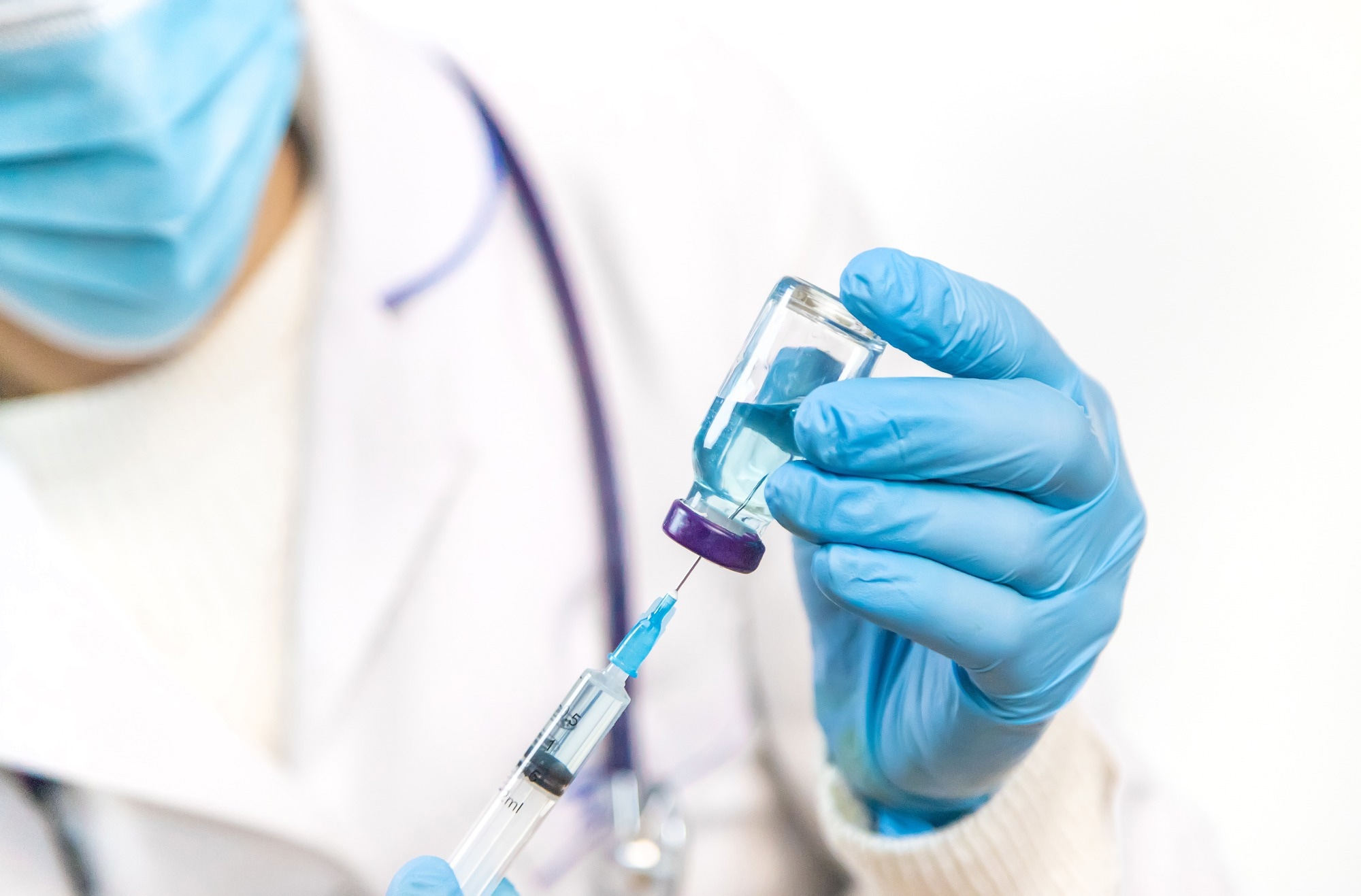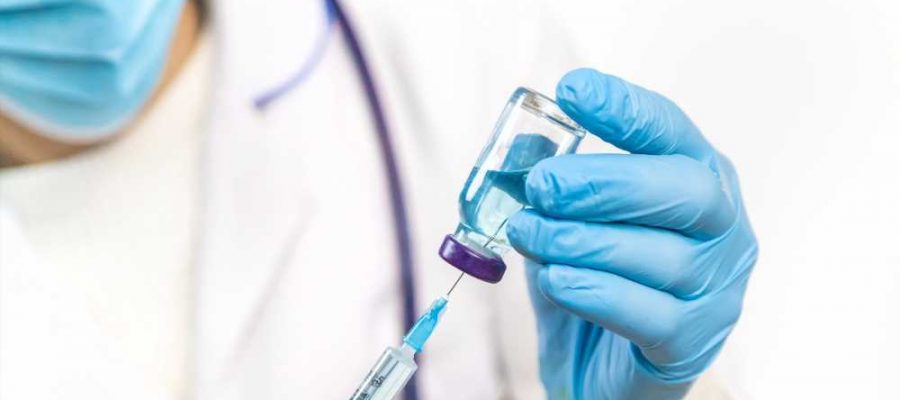The severe acute respiratory syndrome coronavirus 2 (SARS-CoV-2), responsible for the coronavirus disease 2019 (COVID-19) pandemic, has claimed more than 6.92 million lives and infected over 765 million individuals. Most COVID-19 vaccines target the SARS-CoV-2 spike glycoprotein receptor-binding domain (RBD) to prevent the binding of SARS-CoV-2 to the host angiotensin-converting enzyme 2 (ACE-2) receptor.
 Study: Efficacy and Safety of a Protein-Based SARS-CoV-2 Vaccine: A Randomized Clinical Trial. Image Credit: Tatevosian Yana / Shutterstock.com
Study: Efficacy and Safety of a Protein-Based SARS-CoV-2 Vaccine: A Randomized Clinical Trial. Image Credit: Tatevosian Yana / Shutterstock.com
Background
Preclinical studies associated with FINLAY-FR-2 (Soberana 02), a protein subunit vaccine conjugated with the tetanus toxoid carrier protein, have confirmed its effectiveness, with similar results obtained in Phases I, II, and III clinical trials. These trials have shown that FINLAY-FR-1A (Soberana Plus), an RBD dimer without conjugation, has increased neutralization capacity in COVID-19 convalescent individuals. Additionally, when this protein-based vaccine was introduced as the third dose to FINLAY-FR-2, it induced the production of anti-RBD immunoglobulin G (IgG) antibodies.
Several countries, including Iran, Cuba, Venezuela, Belarus, Mexico, and Nicaragua, have approved FINLAY-FR-2 and FINLAY-FR-1A vaccines for emergency use. These vaccines were developed in the Finlay Vaccine Institute of Cuba, manufactured by the Pasteur Institute of Iran, and branded as Pastocovac and Pastocovac Plus.
Recent launches of safe and effective COVID-19 vaccines have raised the hopes of millions living in low-income countries. Previously, many governments across the world faced challenges due to high vaccine costs and building proper infrastructure to store and transport these vaccines at low temperatures.
Two of the critical benefits of RBD-based vaccines are rapid production and affordability. Additionally, these vaccines are stable at temperatures ranging between 2°C and 8 °C.
About the study
A recent JAMA Network Open study discusses the results of the randomized, multicenter, double-blind, placebo-controlled Phase III vaccine trial that assessed the safety profile, immunogenicity, and efficacy of FINLAY-FR-1A in Iran. To this end, Cohort 1 was used to evaluate the two-dose regimen of FINLAY-FR-2 (25 μg), whereas Cohort 2 was administered a two-dose regimen of FINLAY-FR-2 with a third dose of FINLAY-FR-1A (50 μg).
In this study, participants were recruited from eight different cities. Cohort 1 included 17,319 participants from six cities, and Cohort 2 comprised 5,521 volunteers from two cities.
All participants were adults between 18 and 80 years of age without SARS-CoV-2 infection or a history of COVID-19 vaccination. Furthermore, no candidates had congenital or uncontrolled type 2 diabetes, chronic liver disease, hypertension, and chronic kidney disease.
Two doses of FINLAY-FR-2 were administered intramuscularly, 28 days apart. In cohort 2, FINLAY-FR-1A was introduced as a third dose on day 56. Enzyme-linked immunosorbent assay (ELISA) was performed to measure anti-S1 IgG levels.
Study findings
The mean age of the participants was 39.3 years in Cohort 1 and 39.7 years in Cohort 2. No significant difference in age was observed between the vaccinated and placebo groups.
Two doses of FINLAY-FR-2 in cohort 1 had effectively prevented COVID-19. The vaccine efficacy (VE) of cohort 1 was estimated against symptomatic SARS-CoV-2 infection at 49.7%, severe infection at 76.8%, and infection–related hospitalizations at 77.7%.
For cohort 2, VE was significantly higher after the third vaccine dose. More specifically, this vaccine regimen was associated with a VE of 64.9% for preventing symptomatic infection and 96.6% against severe infection and hospitalization.
The VE of the current trial was lower as compared to that of the Phase III randomized trial conducted in Cuba, which could be due to differences in the infection intensity and comorbidities of the study cohorts. Notably, the VE estimated in this study was during Delta variant dominance.
Conclusions
Effective protein-based COVID-19 vaccines could have a greater potential due to their stability and easier distribution. Likewise, the study findings indicate that FINLAY-FR-2 could be used as an affordable and effective third COVID-19 vaccine dose in resource-limited settings.
Two of the key strengths of this study are its large sample size and geographically diverse participants. Nevertheless, the current study has some limitations, including a selection of participants with controlled underlying diseases, which could influence VE.
The authors also failed to perform serological analysis for all participants at baseline due to limited resources. Since older age groups were prioritized for COVID-19 mass vaccination and previously vaccinated individuals were excluded from this trial, this could reduce the generalizability of the finding.
Despite these limitations, the FINLAY-FR-2 vaccine and FINLAY-FR-1A as a booster dose were effective against SARS-CoV-2 infection. Both FINLAY-FR-2 and FINLAY-FR-1A were well-tolerated among the participants and exhibited a prominent safety profile.
- Mostafavi, E., Eybpoosh, S., Karamouzian, M., et al. (2023) Efficacy and Safety of a Protein-Based SARS-CoV-2 Vaccine: A Randomized Clinical Trial. JAMA Network Open 6(5); e2310302. doi:10.1001/jamanetworkopen.2023.10302
Posted in: Drug Discovery & Pharmaceuticals | Drug Trial News | Medical Research News | Disease/Infection News | Pharmaceutical News
Tags: Angiotensin, Angiotensin-Converting Enzyme 2, Antibodies, Assay, Chronic, Chronic Kidney Disease, Clinical Trial, Conjugation, Coronavirus, Coronavirus Disease COVID-19, Diabetes, Efficacy, ELISA, Enzyme, Glycoprotein, Immunoglobulin, Kidney, Kidney Disease, Liver, Liver Disease, Pandemic, Placebo, Preclinical, Protein, Receptor, Respiratory, SARS, SARS-CoV-2, Severe Acute Respiratory, Severe Acute Respiratory Syndrome, Syndrome, Tetanus, Type 2 Diabetes, Vaccine

Written by
Dr. Priyom Bose
Priyom holds a Ph.D. in Plant Biology and Biotechnology from the University of Madras, India. She is an active researcher and an experienced science writer. Priyom has also co-authored several original research articles that have been published in reputed peer-reviewed journals. She is also an avid reader and an amateur photographer.
Source: Read Full Article
